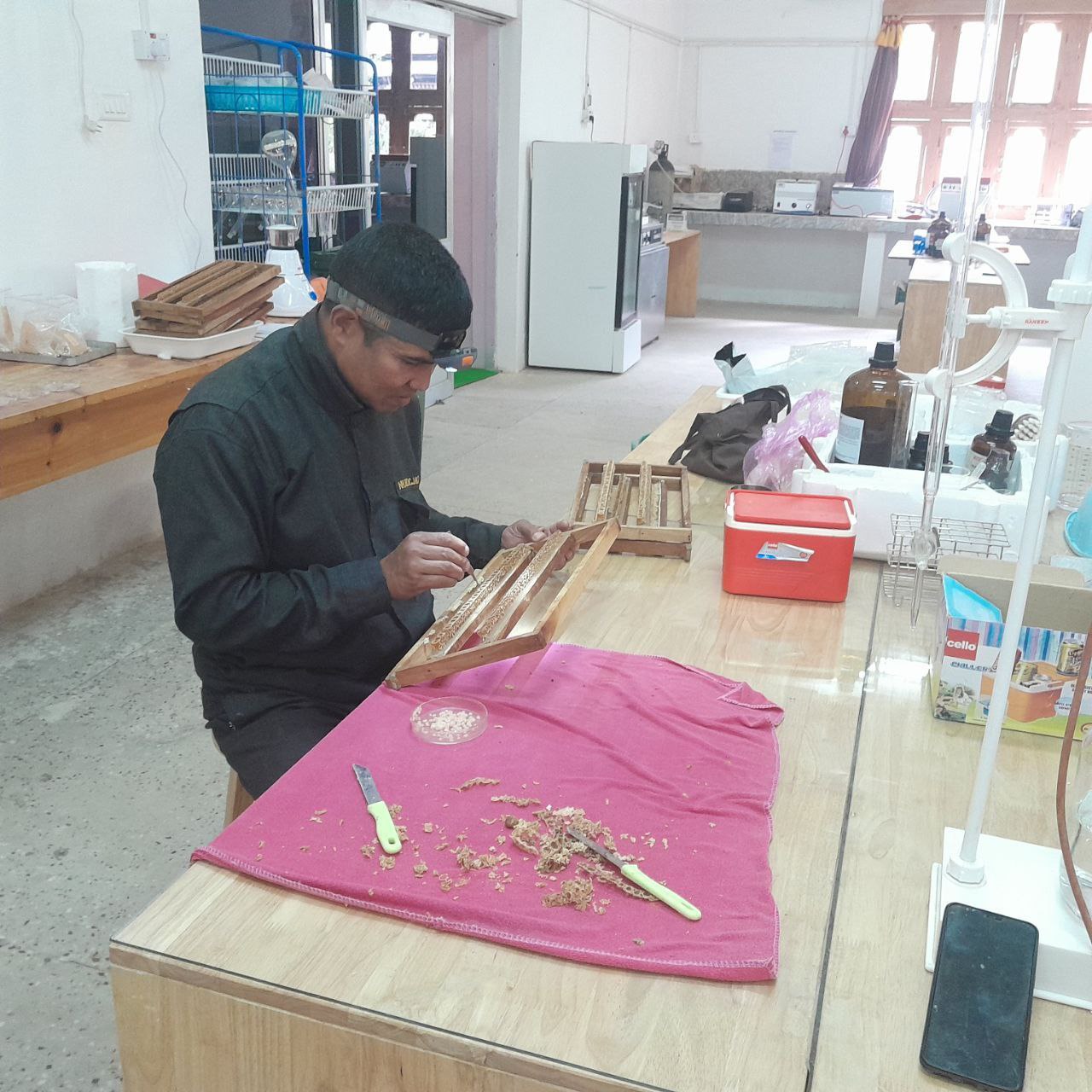EFFECT OF MONTHLY CHANGES (MAY – SEPTEMBER) ON LARVAE ACCEPTANCE RATE AND ROYAL JELLY PRODUCTION IN APIS MELLIFERA COLONIES IN BUMTHANG
Keywords:
Apis mellifera, Bumthang, Larvae acceptance rate, Queenless, Queenright, Royal jellyAbstract
This study investigates the influence of colony status (queenright vs. queenless) and seasonal variations on royal jelly production and larvae acceptance rates in Apis mellifera colonies. The study was conducted at the National Livestock Research Centre (NLRC) apiary in Bumthang, Bhutan, from May 2023 to September 2024. Eight colonies, each with equal adult bee populations and brood percentages, were selected for the study. The colonies were maintained under controlled conditions, with sugar syrup supplementation during the rainy season to ensure uninterrupted nectar flow. Larvae grafting was carried out between May and September each year. Royal jelly produced was harvested and weighed at regular intervals. The results indicated significant seasonal effects (p < 0.05) on both royal jelly production and larvae acceptance rates. Highest production and acceptance were recorded in June, with queenright colonies yielding average royal jelly of 48.0g and 67.9% acceptance rate, while queenless colonies produced an average of 47.0g and had 66.5% acceptance rate. By September, royal jelly production and larvae acceptance rates had declined. Queenright colonies had average production of 16.3g and a 23.0% acceptance rate, while queenless colonies had average production of 16.9g and a 23.9% acceptance rate. The study suggests that royal jelly production is influenced by nectar availability, with peak production occurring when nectar flow is abundant in June. Based on the findings, it is recommended to use faster-developing colonies to improve royal jelly production. A similar study is recommended in different geographical locations (warmer southern districts) to further explore regional variations in royal jelly production.

Downloads
Published
Issue
Section
Categories
License
Copyright (c) 2025 BJAS

This work is licensed under a Creative Commons Attribution 4.0 International License.





